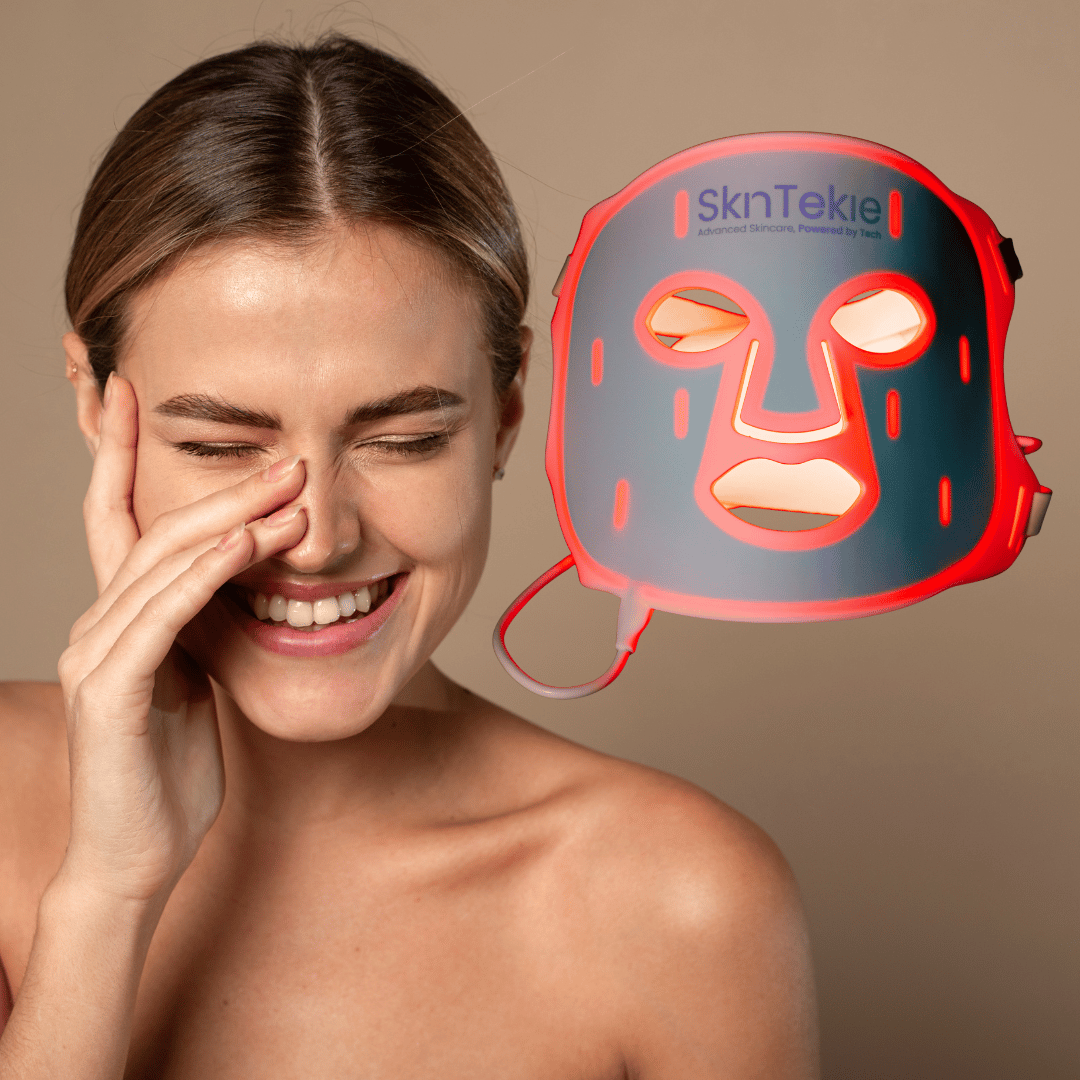
Red Light Therapy for Skin: Does Science Support the Anti-Aging Claims?
Share
The skincare industry has witnessed an explosive growth in LED light therapy devices, with red light therapy for skin leading the charge as consumers seek science-backed solutions for aging and skin concerns. But what does the research actually say about these claims, and how can you separate marketing hype from clinical evidence?
What Is Red Light Therapy?
Red light therapy uses low levels of red light to reportedly improve your skin's appearance, such as reducing wrinkles, scars, redness and acne, according to Cleveland Clinic experts. This non-invasive treatment utilizes specific wavelengths of light, typically between 630-850 nanometers, to penetrate the skin and stimulate cellular processes.
The treatment works through a process called photobiomodulation, where light energy is absorbed by cellular components called chromophores, particularly cytochrome c oxidase in mitochondria. This absorption triggers a cascade of beneficial cellular responses that can improve skin health and appearance.
The Clinical Evidence: What Research Shows
Collagen Production and Anti-Aging Effects
One of the most compelling areas of research focuses on red light therapy's ability to stimulate collagen production. Clinical treatment with LED devices has been shown to augment tissue repair and promote regeneration and skin rejuvenation, according to research published in the Journal of the American Academy of Dermatology.
LED therapy reversed collagen downregulation and MMP-1 upregulation, as demonstrated in a controlled clinical study published in the Journal of Investigative Dermatology. This finding is particularly significant because MMP-1 is an enzyme that breaks down collagen, contributing to skin aging.
Comprehensive Skin Benefits
LEDs are useful in skin therapies, including the treatment of acne vulgaris, herpes simplex and zoster, skin rejuvenation, and psoriasis, according to a systematic review and meta-analysis published in Photodermatology, Photoimmunology & Photomedicine.
The versatility of LED therapy extends beyond anti-aging. Blue LED light is most often used to treat acne. It may do this by reducing activity in the sebaceous glands, so they produce less of the oil that can plug the hair follicles, leading to acne, as reported by Harvard Health.
Safety Profile and Clinical Validation
Safety is a crucial consideration for any skincare treatment. All clinical trials reported that PBM was a safe treatment with no side effects, according to a comprehensive review on photobiomodulation published in the International Journal of Molecular Sciences.
Research suggests that LED light therapy can help reduce and improve some skin conditions and issues. To see improvement in your skin, though, you need to have regular treatments, notes Cleveland Clinic's guidance on LED light therapy protocols.
Skintekie LED Face Mask: Professional-Grade Technology
The Skintekie LED Face Mask represents the evolution of clinical LED therapy for home use. Unlike basic consumer devices, this professional-grade mask incorporates multiple wavelengths optimized for comprehensive skin treatment, delivering the same therapeutic benefits documented in clinical research.
Key features that align with research-backed protocols include:
Multi-Wavelength Technology: Combining red light (660nm) for collagen stimulation with near-infrared light (850nm) for deeper tissue penetration, matching the wavelengths used in successful clinical trials.
Optimal Energy Density: Delivering clinically effective light doses while maintaining the safety profile documented in peer-reviewed studies.
Treatment Protocol Compliance: The mask's 10-15 minute sessions align with research-proven treatment durations that show measurable results without adverse effects.
Understanding the Mechanism of Action
Red light therapy has been shown in clinical studies to penetrate the dermis, stimulating cells to produce collagen and elastin. This leads to noticeable improvements in skin elasticity and texture over time, explains LED Esthetics Science research.
The cellular mechanism involves several key processes:
Mitochondrial Stimulation: Light energy enhances ATP production in skin cells, providing the energy needed for repair and regeneration processes.
Inflammatory Response Modulation: Red light therapy helps regulate inflammatory markers, reducing skin redness and irritation.
Circulation Enhancement: Treatment promotes microcirculation in treated areas, improving nutrient delivery and waste removal.
What to Expect: Realistic Timelines and Results
Low-level red plus near IR lights combination stimulated the production of collagen and elastin production associated with anti-ageing benefits, according to research published in PubMed. However, realistic expectations are important.
Most clinical studies show initial improvements after 4-6 weeks of consistent treatment, with optimal results appearing after 12-16 weeks. The key is consistency—sporadic treatments won't deliver the cumulative cellular changes needed for visible improvement.
Choosing Quality Over Marketing Claims
With the proliferation of LED devices in the market, distinguishing between effective therapeutic devices and basic consumer gadgets is crucial. Look for devices that specify:
- Exact wavelengths used (should match clinical research)
- Energy density measurements (measured in J/cm²)
- Treatment area coverage
- FDA clearance for intended uses
The Skintekie LED Face Mask meets these criteria by incorporating research-validated wavelengths and energy densities, ensuring users receive therapeutic rather than merely cosmetic benefits.
Integration with Skincare Routines
Hundreds of studies documenting red light change the inner workings of cells and blinded clinical trials that show how red light plumps up skin features in human participants through an increase of collagen production, according to Stanford Medicine research insights.
For optimal results, LED therapy should complement, not replace, fundamental skincare practices. Use the treatment on clean skin, follow with appropriate serums or moisturizers, and maintain consistent sun protection during the day.
The scientific evidence supporting red light therapy for skin concerns continues to grow, with peer-reviewed research validating many of the benefits claimed by manufacturers. When choosing an LED device, prioritize products like the Skintekie LED Face Mask that align with clinical research parameters and deliver measurable, research-backed results rather than relying solely on marketing promises.
